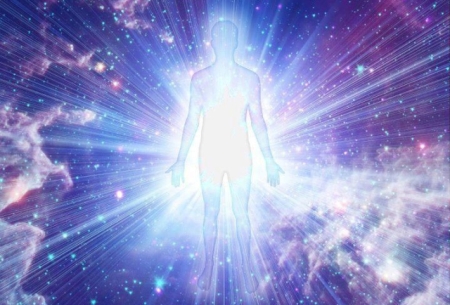The great Indian sage – philosopher – poet Shankaracharya, the apostle of Vedanta, the Advait or Non-Dual tradition of Hindu philosophy, in the 8th century A.D. composed many immaculate poems and chants for his disciples to recite in meditation to experience the essential truth of the inconceivable nature of the soul. The Atma (Soul) Shatakam ( a composition in six stanzas) also known as the Nirvana (enlightenment) Shatakam was one such which when recited through Vedic musical chants moved my innermost being to a rare and ecstatic realization of ones deepest essence, as was intended by him for disciples, The singer Ashit Desai’s rendering of the chant in his ‘Himalayan Chants’ is perhaps the most exquisite in conveying the full spiritual essence of the poem. Repeating the Sanskrit chant with closed eyes one gets a glimpse of what our virtually incomprehensible innermost core is. I have placed the original Sanskrit verse, transliterated in Latin text for those who wish to read the original composition, together with my attempt at a translation in English.
ATMA SHATAKAM
( Song of the Self )
Mano buddhya-hankara chittani naham
Na cha shrotra jihve, na cha ghrana netre
Na cha vyoma bhumirna tejo na vayuhu
Chidananda rupah shivoham shivoham . (1)
Not mind, intellect, memory or ego
Nor the sense of hearing, taste, smell or sight
Not the sky, the earth, wind or light, I am not these,
I am consciousness I am bliss, I am the primal eternal essence.
( Shivoham Shivoham )
Na cha prana sangno na vai pancha vayuh
Na va sapta dhatur na va pancha koshaha
Na vak pani padau na chopastha payoo
Chidananda rupah shivoham shivoham .(2).
Neither am I life nor breath
Nor matter nor form, organs or senses,
Not sheaths of personality, gross or subtle,
I am consciousness I am bliss, I am the primal eternal essence.
Na me dvesha ragau na me lobha mohau
Mado naiva me naiva matsarya bhavah
Na dharmo na chartho na kamo na mokshah
Chidananda rupah shivoham shivoham .(3).
Neither with likes nor aversions
Nor wants nor attachments
Nor competition or envy
Neither pursuing righteousness, nor wrong,
Neither wealth, nor passions nor even liberation
I am consciousness I am bliss, I am the primal eternal essence.
Na punyam na papam na saukhyam na dukham
Na mantro na tirtham na veda na yagnaha
Aham bhojanam naiva bhojyam na bhokta
Chidananda rupah shivoham shivoham .(4).
Neither saintly nor sinful
Nor joyous nor sorrowful
I have no need for pious chanting or pilgrimages
Scriptures or sacrifices,
Neither edible nor the consumer nor the consumption,
I am consciousness, I am bliss, I am the primal eternal essence.
Na me mrutyu shanka na me jati bhedah
Pita naiva me naiva mata na janma
Na bandhur na mitram gurur naiva shishyah
Chidananda rupah shivoham shivoham .(5).
Neither afflicted by death, nor distinctions of race and class,
Unborn, without father or mother
Without kin or friend, Guru or disciple,
I am consciousness, I am bliss, I am the primal eternal essence.
Aham nirvikalpo nirakara rupo
Vibhur vyapya sarvatra sarvendriyanam
Sada me samatvam na muktir na bandhah
Chidananda rupah shivoham shivoham .(6).
Inconceivable and formless,
All pervading and omnipresent,
Inherent in all senses,
Impartial, neither in bondage nor in freedom,
I am consciousness, I am bliss, I am the primal eternal essence.




